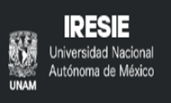DO DISCURSO À AÇÃO: CONTRIBUIÇÕES DA TÉCNICA DE ENTREVISTA EM AUTOCONFRONTAÇÃO PARA A PSICOLOGIA DO TRABALHO | From speech to action: the effectiveness of the self-confrontation interview technique to psychology of work
Palavras-chave:
Ergonomics of Activity, Self-confrontation interview, Information system, Ergonomia da Atividade, Entrevista em autoconfrontação, Psicologia do trabalhoResumo
On the basis of the theoretical and methodological subsidies of the Ergonomics of Activity and, in particular, we seek to show how the principles of self-confrontation interview technique, allows to recourse to the worker speech, not treating it as a mere opinion, in the other words, not incurring to the subjectivism and, besides, clarifying certain tacit dimensions of knowledge and subjects’ behavior that exceed the explanations of common sense. The theoretical framework used is the discussion about the tacit knowledge of ergonomics and its difficulty of making explicit, once this knowledge is located in the body in action. The debate between cognitivists and adherents of the Situation Action makes it possible to contextualize this discussion about the nature of the action and how different theoretical frameworks discuss its possibility of making it explicit. It is a literature review which results point to the need for alternative methods to the traditional ones in the analysis of the activity and its importance to reach the complexity of the work activity, both for studies in work psychology and for ergonomics.
___
Com base nos subsídios teóricos e metodológicos da Ergonomia da Atividade e, em especial da técnica de entrevista em autoconfrontação, procura-se mostrar como os princípios da autoconfrontação permitem que se recorra à linguagem verbal do trabalhador, sem tratá-la como simples opinião, ou seja, sem incorrer em subjetivismo. O quadro teórico utilizado é a discussão sobre o saber tácito da ergonomia e sua dificuldade de explicitação, uma vez que tal saber está localizado no corpo em ação. O debate entre cognitivistas e adeptos da Ação Situada possibilita contextualizar esta discussão sobre a natureza da ação e como diferentes enquadramentos teóricos discorrem sobre sua possibilidade de explicitação. Trata-se de uma revisão da literatura cujos resultados apontam para a necessidade de métodos alternativos aos tradicionais na análise da atividade e sua importância para se alcançar a complexidade da atividade de trabalho, tanto para os estudos em psicologia do trabalho como para a ergonomia.













